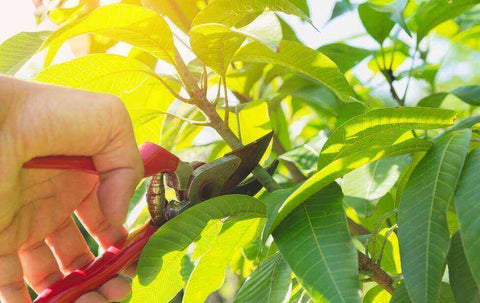Once temperatures start to rise, insects begin to pop up. Many people grow concerned when they start noticing stinging insects in their yard, especially wasps. Paper wasps are a type of wasp frequently spotted in yards and homes. Check out how to identify them so that you can easily eliminate an infestation.
What Do Paper Wasps Look Like?

There are about 22 species of paper wasps in North America and around 200 species worldwide. The European paper wasp is the most commonly found wasp in North America. Golden paper wasps and apache wasps are also found in the United States.
In general, paper wasps have a dark brown body with yellow markings. Sometimes, they can have markings in other colors including red. Paper wasps have black wings and long legs and are known for their thin waist. Their coloring sometimes causes them to be mistaken for yellow jackets, especially European paper wasps. However, paper wasps are slightly larger than yellow jackets and range from 5/8″–3/4″ in length.
What Do Paper Wasp Nests Look Like?

Paper wasps get their name from the appearance of their nests. They are made from plant material, which gives them a paper-like appearance. Nests range in color from gray to brown. They consist of hexagonal cells that are used to house eggs and larvae. The nests have an umbrella-like shape and no outer shell.
Paper wasps are semi-social and live in smaller colonies. They like to hang their nests from tree and shrub branches and twigs. If they find shelter inside, they will construct nests in homes. They can be found in attics, windowsills, door frames, and wall voids. While they can be found in yards, some species have certain preferences. Some paper wasps, like the polistes annularis, prefer locations close to water. The apache wasp is often found in fig orchards.
When Are Paper Wasps Active?

Paper wasps are active throughout spring, summer, and part of autumn. In fall, when temperatures begin to drop, they search for places to shelter during winter. They often end up in homes in attics and wall voids because these places are sheltered. In spring, they emerge and begin constructing nests and laying eggs.
What Do Paper Wasps Eat?

Paper wasps feed on nectar and pollen. They also hunt for insects to feed to their larvae, which helps to control other pest populations.
Where Can Paper Wasps Be Found?

Though paper wasps can be found throughout the United States, some are found more commonly in certain regions. The apache wasp is native to western North America, and the European paper wasp is often seen in the northeastern parts of the United States.
Are Paper Wasps Dangerous?

Paper wasps are not an aggressive species, but they are protective of their nest. If they feel threatened, they won’t hesitate to sting. Paper wasp stings can be very painful, especially because these wasps are able to sting multiple times. Their stings can cause redness and swelling.
Another problem with paper wasps is the location of their nests. Paper wasps like their nests to be sheltered and will work to hide it. When people come across a nest, it is usually unexpected, which makes the attack worse. Though stings aren’t usually harmful, they can cause a severe allergic reaction. If you have trouble breathing or swelling on your face, throat, or lips, seek immediate medical attention.
How to Prevent Paper Wasps

While paper wasps eat other pests, you don’t want them hanging around your yard. Taking the time to make your home less attractive to them can help prevent an infestation.
- Keeping plants, like shrubs and hedges, trimmed will reduce the number of places paper wasps can use for shelter.
- Repair any tears in screens and seal any cracks to prevent them from entering your home.
- When eating outdoors, keep your food covered.
- It’s important to make sure you regularly check your yard and common nesting locations in your home.
How to Get Rid of Paper Wasps

If you find a wasp nest, you’ll want to carefully eliminate it. Our plant-based Wasp & Hornet Killer spray is a more environmentally and family-friendly option when used as directed. It is a foaming jet spray that reaches up to 18 feet and coats the nest. It not only kills wasps, but it also provides residual repellency protection. It’s best to treat nests when wasps are less active at dusk, dawn, or at night.
Though paper wasps love to spend time in your yard, you don’t have to let them stay. Eliminating potential hiding spots and properly treating a nest can help you safely eliminate a paper wasp infestation. If you’re dealing with a pest problem, we want to help! Check out our Maggie’s Farm Simply Effective™ Pest Control products.
